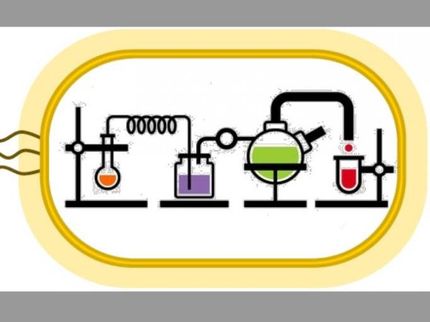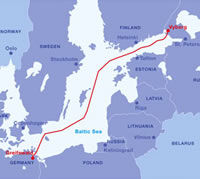Sartorius reviews fiscal 2008
Different outlook for the two Group divisions
Despite the difficult market environment, Sartorius posted slight gains in growth for both Group divisions and robust earnings. "Given the unexpectedly adverse economic conditions, we performed well. Amid this situation, we could not reach our ambitious financial targets for 2008. Yet we still achieved the third best profitability result in our company's history," commented CEO Dr. Joachim Kreuzburg on the yearly results for 2008 at the annual press conference in Goettingen, Germany. Referring to the exceptional uncertainty that still surrounds the economic climate, Dr. Kreuzburg did not provide any specific forecast of the financial results for 2009. "It is already foreseeable that the global economic crisis will have a significantly negative impact on our Mechatronics business in the current year, so we have to expect that sales revenue and earnings for this sector will decline," said Dr. Kreuzburg. By contrast, the biotechnology Division as a supplier to the biopharmaceutical industry is comparably less affected by general cyclical trends. "We are targeting sales and profitability growth for the Biotechnology Division." The mid- and long-term business prospects for both divisions continue to remain excellent, as Kreuzburg further stated. In addition to focusing on systematic cost management, in 2009 we will be launching a large number of innovative products that truly add value for our customers."
Business development of the divisions
Sartorius Stedim Biotech
In 2008, the Biotechnology Division performed well in an exceptionally adverse market environment. In North America the division, just like its competitors, had to grapple with the temporary downturn in demand from a few key accounts as a result of their scale-backs in production and reductions in inventory. This resulted in a drop-off in orders from pharmaceutical suppliers, especially in the first half, whereas during the fourth quarter the North American market environment began showing signs of recovery. On the whole, the division's sales revenue of 366.0 million euros in constant currencies was approximately at the year-earlier level (+0.2%; current exchange rates: -2.6%).
In Europe, the Biotechnology Division's growth was largely fueled by business with disposable products for biopharmaceutical applications. For instance, single-use bioreactors were much in demand. In Asia, Sartorius Stedim Biotech reported flat sales growth on the whole.
In the course of 2008, the division received orders worth 367.1 million euros, up 3.0% on a currency-adjusted basis (current exchange rates: 0.0%). While positive growth impulses came from Europe and Asia, order intake in North America slid due to the market situation there, but then showed an upward trend in the fourth quarter.
The Biotechnology Division achieved operating earnings (EBITA) of 39.7 million euros in fiscal 2008 (2007: 49.7 million euros). Business with single-use products contributed by far the largest share of earnings. Reported at an EBITA margin of 10.9%, the profitability of Sartorius Stedim Biotech continued to remain very solid (2007: 13.2%). This decrease in margin from a year ago essentially resulted from the sales decline in North America and the negative exchange rate impact.
Sartorius Mechatronics
For the first three quarters of 2008, Sartorius Mechatronics reported encouraging gains of more than 5% on a currency-adjusted basis in both order intake and in sales revenue, and thus remained initially unaffected by the emerging economic crisis. In November and December 2008, however, the division received significantly fewer orders for laboratory instruments and industrial weighing and control equipment as a consequence of the global economic downturn, which was reflected by a drop in revenue in some of its segments at year-end. By contrast, the division's service business showed overall positive development throughout the entire fiscal year. At 242.7 million euros, full-year order intake for 2008 was down 0.5% on a currency-adjusted basis from the year-earlier figure (current exchange rates: -2.8%). Sales revenue rose 1.8% (currency-adjusted) and stood at 245.6 million euros (current exchange rates: -0.5%).
When viewed regionally, the cyclical downturn hit North America first so sales with mechatronics products fell in that region, also on a full-year basis. For Europe, by contrast, the division posted slight gains and for Asia, significant increases, as the first three quarters were on track.
The division's operating earnings (EBITA) fell from 21.3 million euros to 17.1 million euros; at year-end, the corresponding EBITA margin was at 7.0% compared with 8.6% a year earlier. This decline was due to the sharp economic downturn and the negative exchange rate impact as well as the higher expenses budgeted for research and development.
Research and development strengthened
In fiscal 2008, Sartorius further intensified its R&D activities and increased its spending on R&D by 10.0% to 43.9 million euros (2007: 39.9 million euros). The rise in R&D costs can be attributed essentially to the build-up of scientific staff. The ratio of R&D costs to sales revenue rose accordingly and was at 7.2%, up from 6.4% a year ago.
Number of employees increased
As of December 31, 2008, the Sartorius Group employed 4,660 people, 142 persons or 3.1% more than in the previous year. In Europe, the number of employees rose 5.4% to 3,151 persons. Of this total, 2,339 worked in Germany overall and 1,829 at the company's headquarters in Goettingen, Germany. In Asia/Pacific, the workforce increased 8.7% to 898 people, whereas in North America, the number dropped 11.8% to 540 employees.
Outlook
Given the high uncertainty surrounding global economic development, Sartorius still does not think it possible to issue a reliable forecast about how its business will evolve in 2009. As experience has shown, the growth potential for the Mechatronics Division, which predominantly manufactures capital goods, is significantly affected by the economic climate. Because sales revenue for this division has been declining since the end of 2008, Sartorius has implemented extensive programs designed to swiftly cut costs and strengthen cash flow. These programs entail a temporary reduction in workhours and salaries for some 950 employees of the Mechatronics Division and administrative staff at the Goettingen and Hamburg, Germany, sites. As company management expects its Mechatronics Division to face very difficult market conditions throughout 2009, it anticipates that sales revenue and earnings in this division will decline in the current fiscal year. By contrast, the Biotechnology Division as a supplier to the pharmaceutical industry is usually less affected by general cyclical trends as the company has experienced so far. For this reason, company management plans for growth in sales revenue and earnings for this division.



























































